Camicado [Checkout]
I was responsible for improving the checkout process of Camicado’s ecommerce. My main goal was to ensure that the user experience was smooth and intuitive, resulting in increased conversions and customer satisfaction. To achieve this, I conducted user research, analyzed data through tools like Google Analytics and Hotjar, and created high-fidelity prototypes that were tested with users. Through this process, I was able to identify pain points and opportunities for improvement, which I then implemented through design iterations and collaboration with the development team. As a result of these efforts, the website saw a significant increase in completed purchases and positive feedback from users.
Task
Improve Camicado's checkout process through user research, data analysis, high-fidelity prototypes, design iterations, and cross-functional teams collaboration, resulting in increased conversions and customer satisfaction.
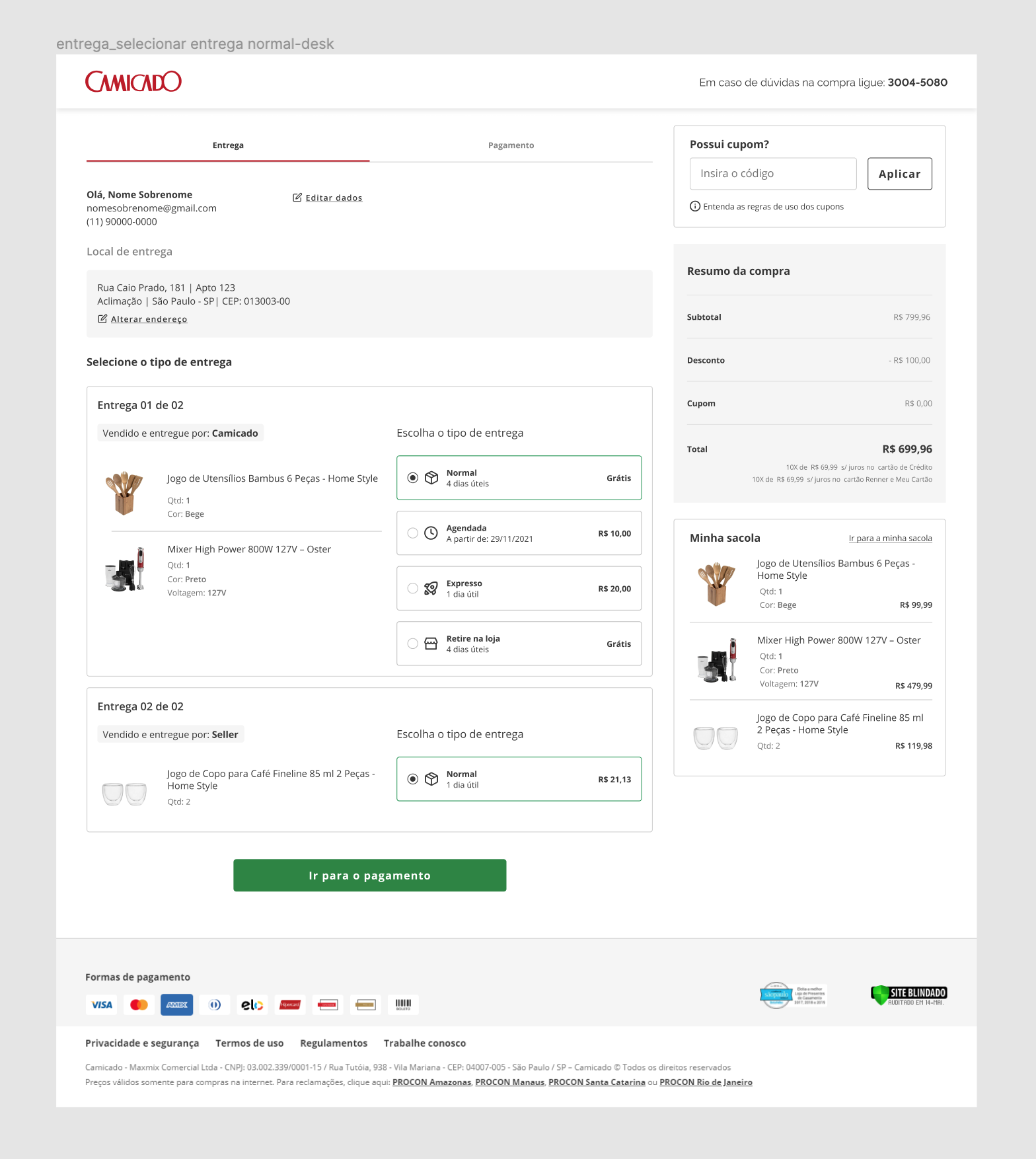
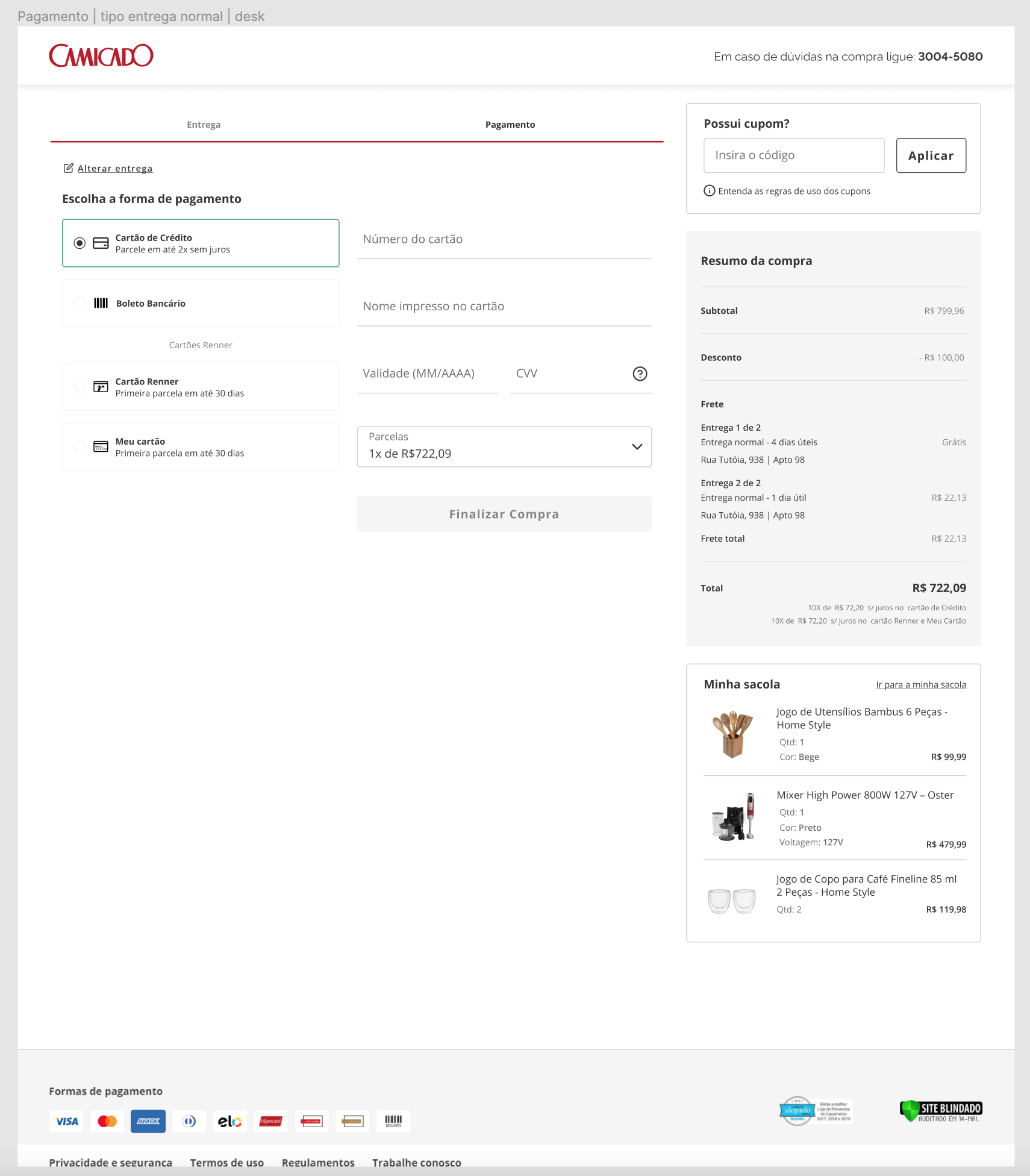
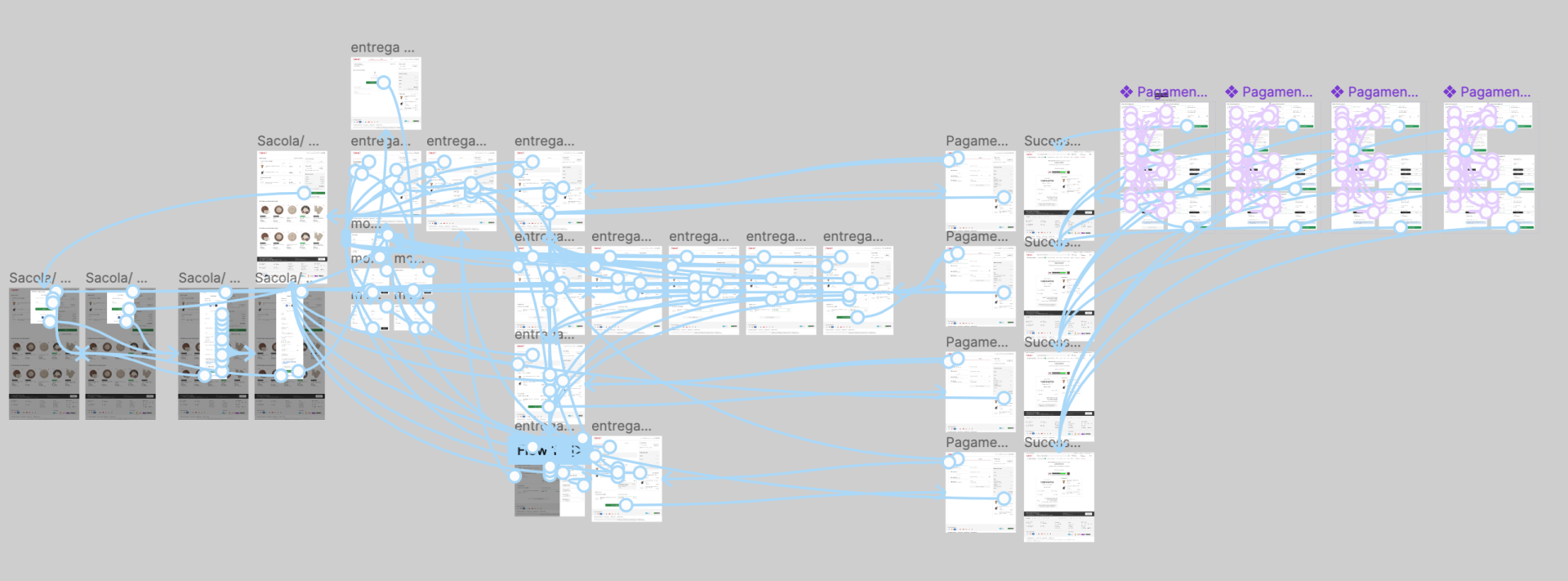
Based on information provided by POs and stakeholders, it was identified that many users were not completing purchases in certain checkout stages. To better understand the problem, we used various tools including click reports and screen recordings from Hotjar, Google Analytics tagging, and conducted interviews with users. With this information, we identified UI design and visual information hierarchy problems, textual issues, and poorly defined checkout stages.
Based on the collected information, we identified several problematic areas to focus on, including UI design and visual information hierarchy issues, textual problems, and poorly defined checkout stages.
To develop solutions, we conducted research and benchmarking, and created prototypes using Figma. We created two types of layouts, Onepage and Steps, to test with users and see which solution would be most suitable for improving the user experience.
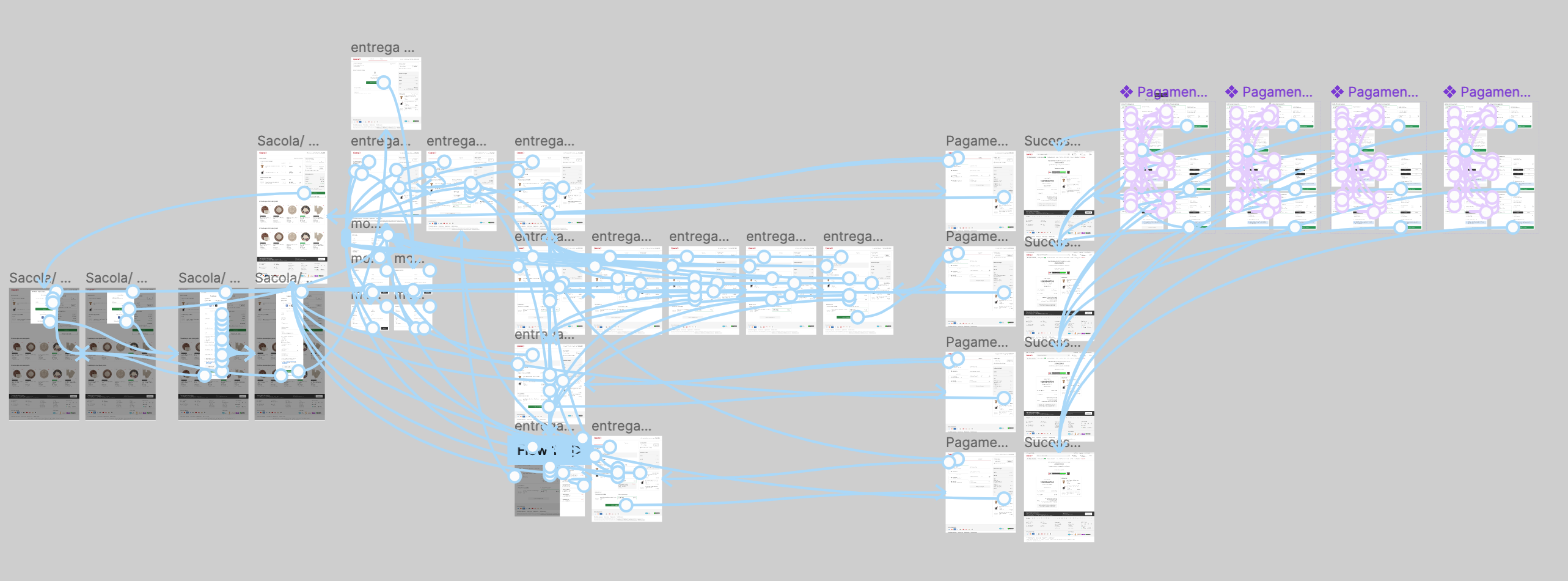
We tested and validated our solutions with users using Onepage and Steps prototypes, on both mobile devices and desktops. After testing, it became clear that the Steps solution was the most efficient, as it allowed users to better understand the checkout process and which stage they were in. We also resolved UI design and textual problems, making the user experience clearer and more intuitive.
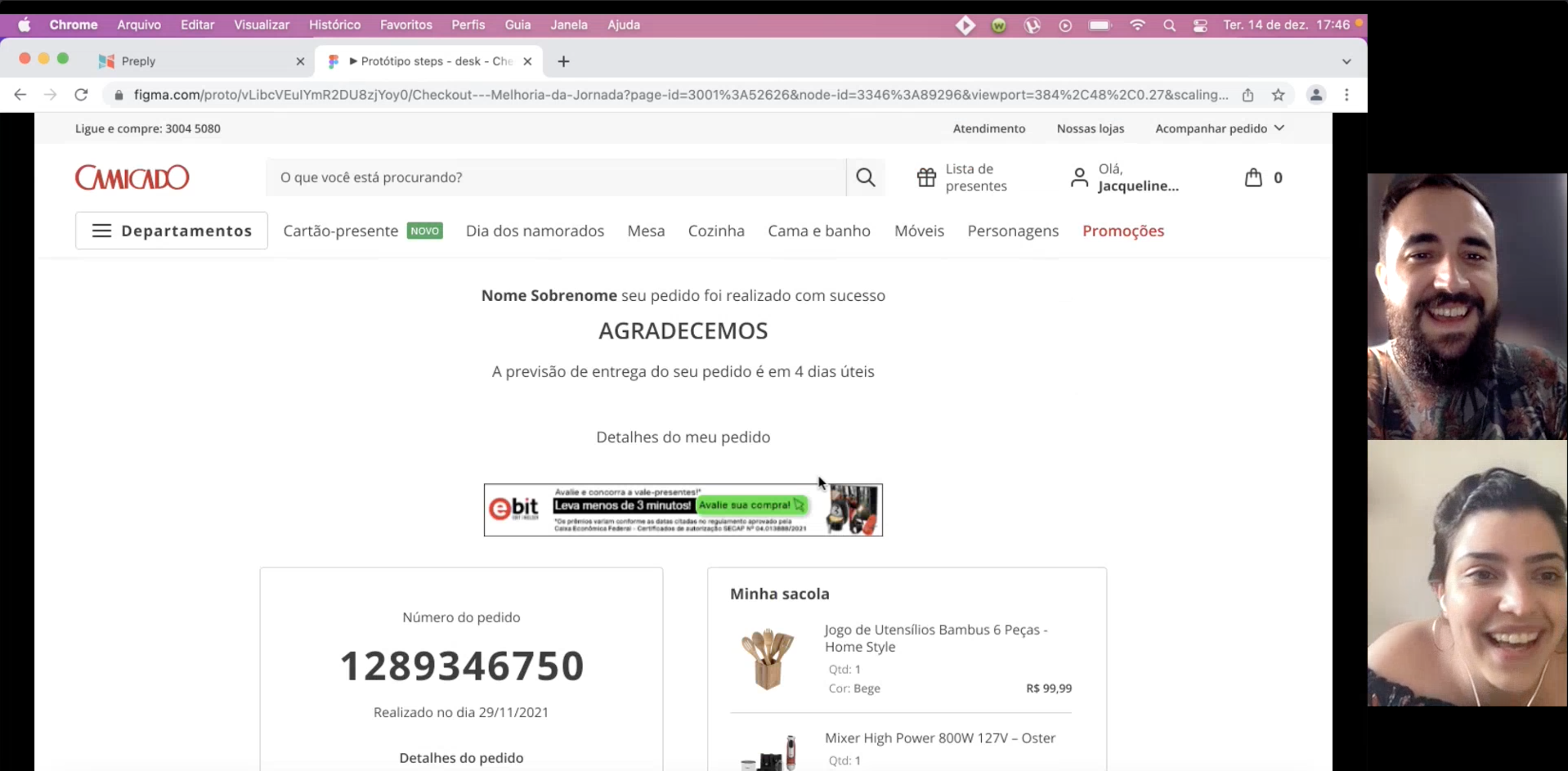
After implementing the solution, we constantly monitored the checkout flow to verify if the improvements were generating expected results and if there were new opportunities for improvement. Results showed a significant increase in the conversion rate at checkout stages, and users were satisfied with the changes.
Hence, the comprehensive redesign of the checkout process for Camicado represents the most important development in our drive to improve user experience and make the journey of buying smoother. Thus, integrating feedback-led design principles coupled with firm focus on user-centric enhancements, an interface has been delivered for checkout that looks refined and works with superior efficiency.
Care was taken in the redesign process to make sure that all details were performed in a manner-simplifying the layout, step-by-step flow-so users could navigate the system more easily and with less confusion. Implementation of intuitive design elements-like form fields, responsive error handling, and more logical content arrangement-significantly enhances user interactions.
Follow-through qualitative feedback from the end-users during the testing phases proved to be remarkably positive. It reflected deep appreciation for a cleaner, more straightforward interface. These user experiences would therefore provide an indication that the new design will probably have higher satisfaction rates and higher conversion rates because this design adheres to best practices known to minimize checkout abandonment and improve transaction completion rates.
By applying up-to-date UI/UX design strategies and paying attention to the reduction of cognitive load for users, the redesigned checkout process in Camicado has great potential to increase brand value and customer loyalty in the long run, and sales growth. The project gives a critical example of how thought-out design can meet business objectives and improve user engagement in tangible means.
In other words, the redesign of “Camicado Checkout” actually serves as yet another proof of a user-oriented design and its consequence for business metrics and customer satisfaction. It really sets a new benchmark of what is possible in e-commerce regarding efficiency and aesthetics.